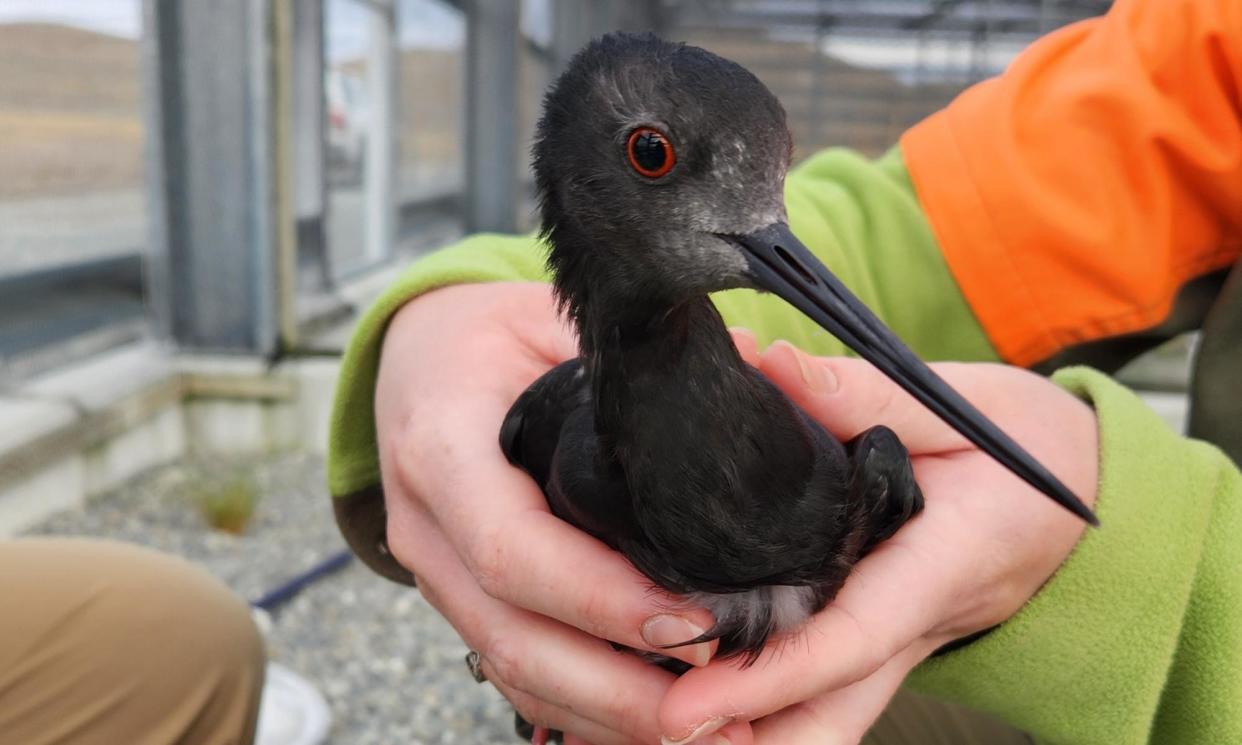New Zealand rushes vaccination of endangered birds before deadly strain of H5N1 bird flu arrives

Many of them cannot fly, some of them like to get drunk, and others are fond of stealing. They are unique and idiosyncratic, both beloved and annoying, with many endangered as well, but New Zealand’s native birds are now under threat from a new enemy: a highly evolved strain of deadly bird flu.
The country is in the second phase of vaccination trials on native birds, with early results suggesting it could be an effective line of defence against the highly pathogenic H5N1 avian flu strain. The virus has decimated bird populations in other countries, with New Zealand experts fearing it could wipe out entire species.
Birds occupy a special place in the hearts of New Zealanders. An island nation with far more native birds than mammals, birds can dominate popular culture: a bird of the year competition is hotly contested, while a 2015 competition to reimagine the national flag saw a design featuring a Kiwi shooting lasers from its eyes become a tongue-in-cheek favourite.
A small group of birds from five critically endangered species – the takahē, kākāpō, tūturuatu (shore plover), kakī (black stilt) and one type of kākāriki – were given two doses of the vaccine a month apart, starting in late January, with six-month efficacy tests about to start.
New Zealand has not had a reported case of H5N1 but government agencies are deploying a biosecurity response that includes targeting vulnerable species and ramping up the surveillance of wild seabird flocks with a focus on New Zealand’s subantarctic islands, now considered the most likely path for the disease to reach the country.
New Zealand has a greater diversity of seabirds than anywhere in the world, and dozens of endemic species. About 80% of its native birds are endangered, including several species of seabirds such as the black-billed and red-billed gull, according to the Department of Conservation (DOC). More than a dozen are on the brink of extinction, including the tara iti, or fairy tern.
Biosecurity minister Andrew Hoggard said protecting vulnerable native birds was a priority as the flu could have a severe impact on already depleted species.
“We don’t want to vaccinate everything now, but we do need to make sure we have a supply ready. It’s a case of when, not if.”
Authorities believe California condors are the only other wild bird population which has had a vaccination programme outside zoos, initiated by the US last year.
Millions of birds worldwide have been killed by the mutated version of the H5N1 virus, once mostly found in poultry. It reached Antarctica in February and has sent Australian authorities scrambling. In some areas, it has reduced bird populations by 75%. Signs of disease include weakness and seizures, head twisting, and breathing distress.
Brett Gartrell, professor of wildlife health at Massey University’s Wildbase hospital, said the disease would spread quickly once it reached New Zealand.
“In the past we used to think it would come in from the north from migratory birds, but this strain of it has developed an affinity for making seabirds really sick so it’s been able to leapfrog from South America to the Antarctic,” said Gartrell. Seabirds regularly fly vast distances across the Southern Ocean.
“Many of our native species are already embattled, and the results would be tragic,” he said.
DOC veterinarian Kate McInnes is leading the vaccination trial.
“It’s pretty rare to be preparing at this level prior to something arriving, but we are conscious we need to get this right. The alternative is devastating,” said McInnes.
Not all wild birds can be vaccinated as they have to be caught three times – for two doses of the vaccine one month apart, and again for blood testing. The 50 birds that have been vaccinated are part of DOC’s breeding populations and have been immunised in captivity.
“We’re working on a response that’s looking at which species would go extinct if there was an outbreak and for these species we can intervene,” said McInnes.
The vaccine does not contain a live virus and cannot cause infection, she said. Antibodies have been detected in all birds, a sign the protein-based vaccine is working, and there have been no adverse reactions. Ongoing testing will aim to find out how long protection lasts.
Gartrell’s team are preparing an isolation unit for sick birds at Wildbase hospital in Palmerston North. Any seagull brought in would be killed, but guidelines were still being developed around the treatment of critically endangered species, with a risk of infection in humans. Crossover to humans is rare.
“We just have to minimise impact,” Gartrell said.
Government agencies were also working with poultry meat and egg farmers to develop biosecurity plans, including to limit interaction between wild birds and poultry.
Scientists in Scott Base and the subantarctic islands have been trained on how to sample and report dead birds as part of an early warning system, the government’s chief veterinary officer Mary van Andel said.
In Wellington, McInnes recently returned from a walk around the city’s shoreline.
“I don’t think I saw a bird in my walk where I didn’t think ‘I wonder what’s going to happen to them?’ We are struggling with this level of uncertainty – when it arrives, what species will it affect, and how badly will it affect them?”


